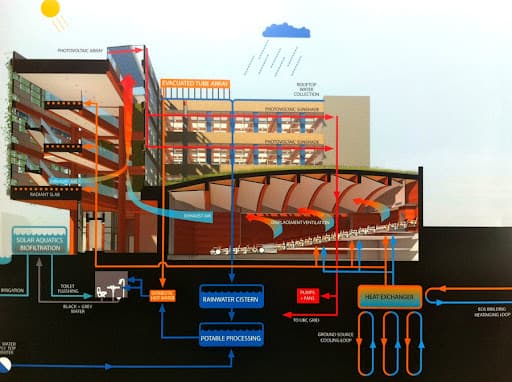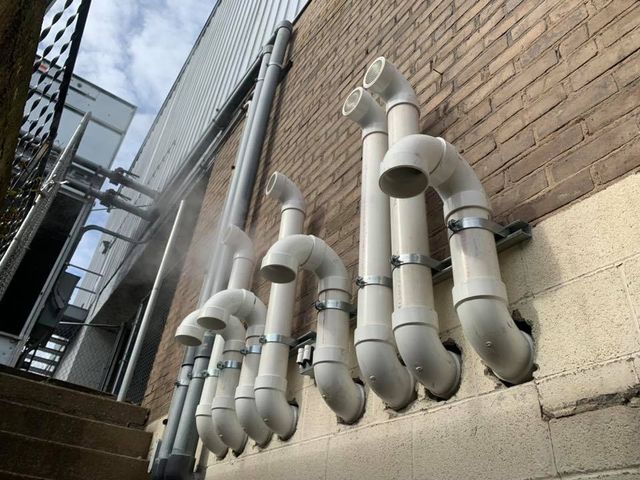We've stumbled upon this post relating to Understanding Your Home's Plumbing Anatomy listed below on the internet and think it made sense to talk about it with you on my blog.

Recognizing just how your home's plumbing system works is crucial for every single home owner. From supplying tidy water for alcohol consumption, cooking, and bathing to safely removing wastewater, a well-maintained pipes system is vital for your family members's health and wellness and comfort. In this extensive guide, we'll explore the detailed network that composes your home's pipes and offer suggestions on maintenance, upgrades, and handling usual concerns.
Intro
Your home's plumbing system is more than just a network of pipes; it's a complex system that guarantees you have accessibility to clean water and reliable wastewater elimination. Understanding its parts and exactly how they collaborate can help you prevent pricey repair services and guarantee everything runs efficiently.
Fundamental Parts of a Plumbing System
Pipelines and Tubing
At the heart of your plumbing system are the pipelines and tubes that carry water throughout your home. These can be constructed from numerous products such as copper, PVC, or PEX, each with its benefits in terms of durability and cost-effectiveness.
Components: Sinks, Toilets, Showers, and so on.
Fixtures like sinks, commodes, showers, and bathtubs are where water is utilized in your house. Comprehending just how these components connect to the pipes system assists in diagnosing troubles and intending upgrades.
Shutoffs and Shut-off Points
Valves regulate the circulation of water in your pipes system. Shut-off valves are crucial throughout emergency situations or when you need to make repairs, allowing you to separate parts of the system without interfering with water circulation to the whole home.
Water System System
Key Water Line
The main water line connects your home to the community supply of water or a personal well. It's where water enters your home and is dispersed to numerous components.
Water Meter and Stress Regulatory Authority
The water meter procedures your water use, while a pressure regulator makes sure that water moves at a safe pressure throughout your home's pipes system, avoiding damages to pipelines and components.
Cold Water vs. Warm water Lines
Understanding the distinction between cold water lines, which provide water straight from the main, and hot water lines, which lug warmed water from the water heater, aids in troubleshooting and planning for upgrades.
Water drainage System
Drain Pipes and Traps
Drain pipelines bring wastewater far from sinks, showers, and commodes to the drain or sewage-disposal tank. Catches protect against sewage system gases from entering your home and also trap debris that might trigger obstructions.
Air flow Pipelines
Air flow pipelines permit air right into the water drainage system, preventing suction that could slow drainage and cause traps to empty. Appropriate ventilation is vital for preserving the stability of your pipes system.
Value of Correct Water Drainage
Making certain proper drainage avoids backups and water damage. Routinely cleansing drains pipes and keeping catches can stop pricey repair services and prolong the life of your plumbing system.
Water Heating Unit
Kinds Of Water Heaters
Water heaters can be tankless or traditional tank-style. Tankless heaters warmth water as needed, while storage tanks keep heated water for immediate usage.
Upgrading Your Plumbing System
Reasons for Updating
Upgrading to water-efficient fixtures or replacing old pipelines can enhance water high quality, decrease water bills, and increase the worth of your home.
Modern Pipes Technologies and Their Benefits
Explore technologies like clever leak detectors, water-saving bathrooms, and energy-efficient hot water heater that can conserve money and decrease ecological impact.
Cost Considerations and ROI
Calculate the ahead of time costs versus long-term financial savings when considering plumbing upgrades. Several upgrades pay for themselves via decreased energy expenses and less fixings.
Just How Water Heaters Connect to the Plumbing System
Understanding just how hot water heater connect to both the cold water supply and warm water circulation lines aids in detecting issues like insufficient hot water or leaks.
Upkeep Tips for Water Heaters
Consistently flushing your hot water heater to remove sediment, examining the temperature settings, and inspecting for leaks can extend its lifespan and improve energy performance.
Common Pipes Problems
Leakages and Their Causes
Leakages can occur because of maturing pipes, loosened installations, or high water pressure. Attending to leakages quickly stops water damages and mold and mildew development.
Clogs and Clogs
Blockages in drains and commodes are typically brought on by purging non-flushable things or a build-up of oil and hair. Making use of drain displays and being mindful of what goes down your drains pipes can stop obstructions.
Signs of Plumbing Troubles to Expect
Low tide stress, slow-moving drains, foul odors, or abnormally high water bills are indications of prospective pipes problems that ought to be resolved quickly.
Plumbing Maintenance Tips
Routine Assessments and Checks
Arrange annual plumbing evaluations to catch problems early. Search for indications of leakages, corrosion, or mineral accumulation in taps and showerheads.
DIY Maintenance Tasks
Easy tasks like cleansing faucet aerators, looking for commode leaks utilizing dye tablets, or protecting revealed pipelines in cold climates can stop significant plumbing issues.
When to Call an Expert Plumbing
Know when a plumbing problem needs specialist competence. Trying intricate repairs without proper knowledge can lead to more damages and greater repair expenses.
Tips for Reducing Water Usage
Straightforward habits like fixing leaks quickly, taking shorter showers, and running full loads of laundry and dishes can save water and reduced your energy expenses.
Eco-Friendly Plumbing Options
Consider lasting pipes materials like bamboo for flooring, which is durable and eco-friendly, or recycled glass for kitchen counters.
Emergency Readiness
Actions to Take During a Plumbing Emergency situation
Know where your shut-off shutoffs are located and how to turn off the water in case of a burst pipeline or major leakage.
Importance of Having Emergency Calls Useful
Keep call information for regional plumbing technicians or emergency situation services conveniently offered for quick action during a plumbing dilemma.
Ecological Influence and Preservation
Water-Saving Components and Devices
Mounting low-flow taps, showerheads, and toilets can significantly lower water use without compromising performance.
Do It Yourself Emergency Situation Fixes (When Appropriate).
Short-term solutions like utilizing air duct tape to patch a dripping pipe or placing a container under a dripping faucet can minimize damage up until a specialist plumbing shows up.
Verdict.
Recognizing the anatomy of your home's plumbing system empowers you to maintain it efficiently, saving time and money on repair services. By following regular maintenance regimens and remaining educated regarding modern-day plumbing technologies, you can ensure your pipes system runs efficiently for years to find.
Understanding Your Home Plumbing System: A Comprehensive Guide
Plumbing System: The Lifeline of Your Home
At its core, the plumbing system is designed to perform two primary functions: bring fresh water into your home and remove wastewater. The system is a network of pipes, fixtures, and other components that transport water and sewage. Residential plumbing systems include potable water supply lines, drain-waste-vent (DWV) systems, and various plumbing fixtures that make water use in daily tasks possible.
Key Components:
Water Supply: This part of your plumbing system brings municipal water into your home, passing through the main water supply line. It s responsible for supplying all water needs, from drinking to bathing.
Drainage System: It carries waste and water away from your home to the sewer or septic system. This system includes all the piping within your home that leads to external sewage or septic systems.
Vent System: An essential yet often overlooked component, the vent system allows sewer gases to escape and lets air into the drainpipes, ensuring water and waste move correctly through the system.
Fixture: More Than Just Taps and Toilets
Plumbing fixtures are the most interactive parts of the plumbing system, including faucets, showers, toilets, and sinks. Each fixture is connected to the plumbing system and plays a role in either the delivery of freshwater or the disposal of waste and wastewater.
Types of Fixtures:
Faucets and Sinks: Used for washing hands, dishes, and other daily water needs. Toilets: Dispose of human waste through the sewage system. Bathtubs and Showers: Provide bathing facilities, requiring both hot and cold water supply. Water Supply: The Source of Life
The water supply system is a critical component, ensuring that potable water is available throughout your home for various uses, including drinking, cooking, and cleaning. This system consists of pipes that distribute water to different parts of the house, controlled by valves to regulate the water flow.
Types of Plumbing: Materials and Methods
Various types of plumbing systems and materials are used in residential settings, each with its advantages and applications. From copper and PVC pipes for water supply to cast iron and ABS for drainage, the choice of materials can impact the longevity and efficiency of your plumbing system.
https://intownplumbingtx.com/articles/home-plumbing-system-guide/

We hope you enjoyed our article about Exploring Your Homes Plumbing Anatomy. Many thanks for taking a few minutes to read through our short article. Please take the time to promote this article if you appreciated it. Thanks a lot for your time spent reading it.
Schedule Appointment Now